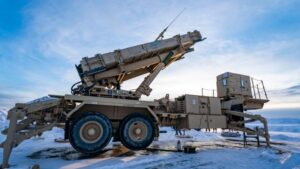General Atomics Aeronautical Systems, Inc. (GA-ASI) and Pratt & Whitney Canada successfully tested a new PT6 E-Series turboprop engine on the MQ-9B SkyGuardian during a 44-minute flight last Monday, July 15.
The recent flight demonstrated not only exemplary handling and acceleration but also positioned the MQ-9B for more robust future operations with enhanced power and efficiency.
Witnessed by GA-ASI and Pratt & Whitney representatives, the event celebrated the integration of the PT6 engine—a product of years of collaboration between the two companies, particularly reminiscent of their previous work on the jet-powered MQ-20 Avenger drone.
“We’re excited to see the PT6 engine on our MQ-9B aircraft,” said GA-ASI President David R. Alexander in a released statement. “The first flight marks an important milestone for MQ-9B SkyGuardian and SeaGuardian customers and missions that require additional power.”
MQ-9 B’s variants, SkyGuardian and SeaGuardian, are fundamentally the same platforms, with slight differences in operational roles based on each platform’s payload configuration. This makes SkyGuardian ideal for aerial missions and SeaGuardian essential for maritime operations.
Pratt & Whitney Canada’s New PT6 E-Series Engine
The PT6 E-Series engine is notable for its reliability and versatility.
GA-ASI noted that the new turboprop engine can produce up to a 33 percent increase in power compared to the current engine used in the MQ-9B “with a highly mature dual-channel Full Authority Digital Engine Controller.”
PT6 E-Series (@prattandwhitney/X)
This enhancement comes with the promise of low sustainment costs, especially for customers who choose the Pratt & Whitney engine. It is also facilitated by best-in-class Time Between Overhauls and support from over 50 maintenance and overhaul facilities worldwide.
Operational Excellence and Global Impact
MQ-9 Reaper’s development began in response to the need for long-endurance, armed unmanned aerial vehicles (UAV). Its roots trace back to the early 1990s with the RQ-1 Predator, a smaller drone project by General Atomics.
Building on that experience, General Atomics developed the Predator B, a larger and more capable platform, which eventually evolved into the MQ-9 Reaper we know today.
The Reaper’s first flight occurred in 2001, and it entered service shortly after the 9/11 attacks, becoming a key player in the War on Terror.
Since then, the MQ-9 has continuously upgraded its weapons systems, sensors, and endurance, solidifying its position as a dominant force in modern warfare.
MQ-9 Reaper sits on the flight line. (DVIDS)
MQ-9B is its next-generation Remotely Piloted Aircraft (RPA), known for its exceptionally long endurance and range.
This revolutionary RPA features capabilities such as auto takeoff and landing under satellite communication (SATCOM), which only controls and operates in unsegregated airspace using a GA-ASI-developed Detect and Avoid system.
Already in use by the United Kingdom and contracted with Belgium, Canada, Taiwan, and the US Air Force in support of Special Operations Command, the MQ-9B also plays a critical role in maritime operations for the Japan Coast Guard and the Japan Maritime Self-Defense Force (JMSDF).
In Summary: This first flight of the MQ-9B with the PT6 E-Series engine not only solidifies GA-ASI’s leadership in drone technology but also enhances the operational capabilities of its clients worldwide, promising a new era of efficiency and performance in unmanned flight.
—
Disclaimer: SOFREP utilizes AI for image generation and article research. Occasionally, it’s like handing a chimpanzee the keys to your liquor cabinet. It’s not always perfect and if a mistake is made, we own up to it full stop. In a world where information comes at us in tidal waves, it is an important tool that helps us sift through the brass for live rounds.



